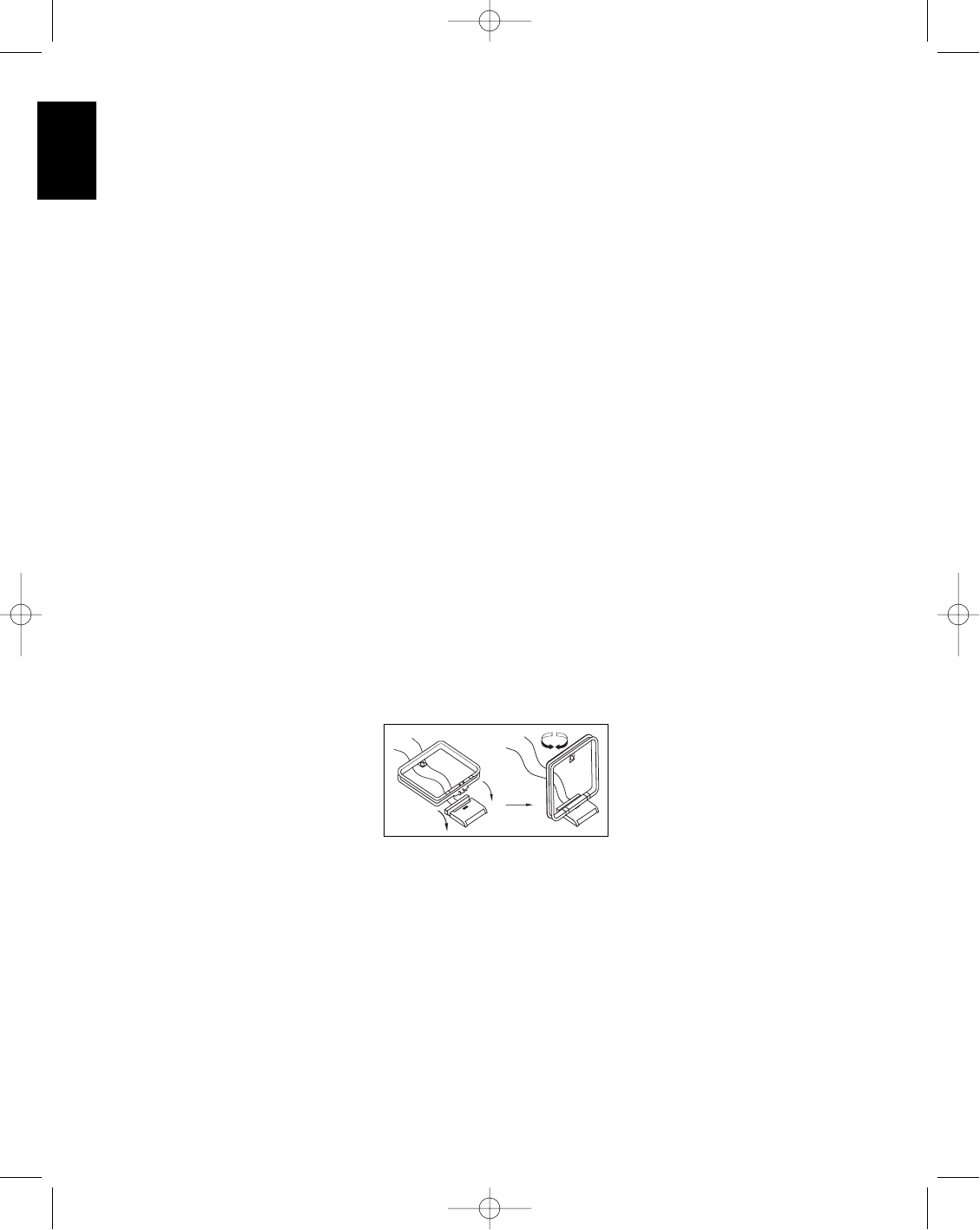
Installation, Set Up & Configuration
10
ENGLISH
System Installation
After unpacking the unit, and placing it
in on a solid surface capable of
supporting its weight, you will need to
make the connections to your audio and
video equipment. These steps need to be
done only when the receiver is first
installed, or when a change is made to
the input source equipment.
Audio Input and Output
Connections
Use the “Audio and Systems
Connections” Diagram in the inside front
cover as a guide to connecting audio
components and speakers to the rear
panel. We recommend that you use high
quality cables when making connections
to source equipment and recorders to
preserve the quality of the signals.
NOTE: When making connections to
audio source equipment or speakers it is
always a good practice to unplug the unit
from the AC wall plug. This prevents any
possibility of accidentally sending audio
or transient signals to the speakers that
may damage them.
1. For playback only sources, such as a
CD player, CD changer, external phono
preamp or external digital to analog
converter, connect the output jacks of the
player to the appropriately labeled inputs
on the rear panel. ©
NOTE: When the source device has both
fixed and variable audio outputs it is best
to use the fixed output unless you find
that the input to the receiver is so low
that the sound is noisy, or high that the
signal is distorted.
2. When connecting recording devices
such as cassette recorders, open reel tape
decks, DCC, DAT or MD, connect the
PLAY/OUT jacks of the recorder to the IN
jacks ∂ƒ. Connect the RECORD/IN
jacks on the recorder to the OUT jacks
çé.
3. Assemble the AM Loop Antenna
supplied with the unit as shown below.
Connect it to the AM and GND screw
terminals ∫.
4. Connect an FM antenna to the
FM (75 ohm) connection å. The FM
antenna may be an external roof
antenna, an inside powered or wire lead
antenna, or a connection from a cable TV
system. Note that if the antenna or
connection uses 300 ohm twin lead cable,
you must use the 300 ohm to 75 ohm
adapter supplied with the unit to make
the connection.
5. Connect the front, center and surround
speaker outputs ˙î∆˚¬ to the
respective speakers.
To assure that all the audio signals are
carried to your speakers without loss of
clarity or resolution, we suggest that you
use high quality speaker cable. Many
brands of cable are available, and the
choice of cable may be influenced by the
distance between your speakers and this
receiver, the type of speakers you use,
personal preferences and other factors.
Your dealer or installer is a valuable
resource to consult in selecting the proper
cable.
Regardless of the brand of cable selected,
we recommend that you use a cable
constructed of fine, multi-strand copper
with a gauge of 14 or larger. Remember,
that in specifying cable, the lower the
number, the thicker the cable.
Cable with a gauge of 16 may be used for
short runs of less than ten feet. We do not
recommend that you use cables with an
AWG equivalent of 18 or higher due to the
power loss and degradation in
performance that will occur.
One way to insure that cables will deliver
a predictable level of performance is to
use Home THX
®
certified cables. This
certification assures that the cables have
met a rigorous set of specifications
designed for home theater applications.
Cables that are run inside walls should
have the appropriate markings to
indicate listing with appropriate testing
agency standards. Questions about
running cables inside walls should be
referred to your installer or electrical
contractor.
AVR80 manual 11/01/98 13:01 Side 10


















